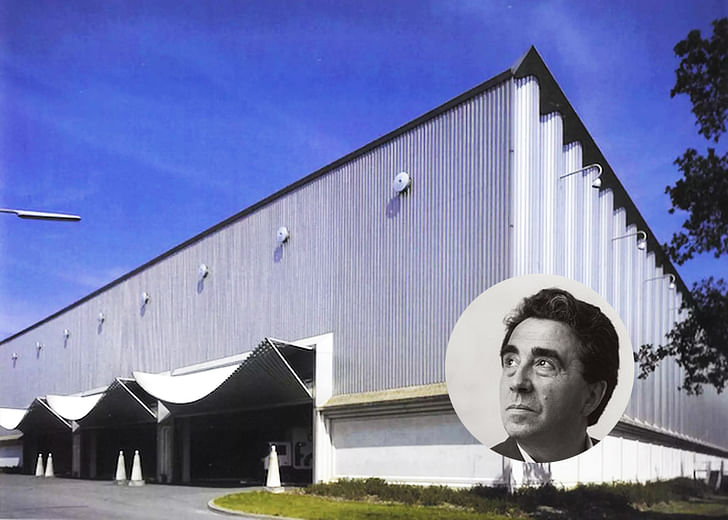

From the Ground Up is a series on Archinect focused on discovering the early stages & signs of history's most prolific architects. Starting from the beginning allows us to understand the long journey architecture takes in even the most formative of hands and the often, surprising shifts that occur on its journey. These early projects grant us a glimpse into the early, naive, ambitious—and at points, rough—edges of soon to be architectural masters.
Lines of structure, structured lines, Santiago Calatrava is synonymous with the monumental image of structure. With larger than life tectonic spans, endless repetition and structure becoming art, Calatrava has perfected, not without controversy, the nuances of light, metal, and form.
In his early years, Santiago was not yet focused on his iconic bridges, towers but instead he was focused on the implications of math, science, and physics in the built world. His early research and studies were completely focused on the works and structures of Buckminster Fuller and his endeavors as equally both structure and creative productions.
Santiago Calatrava was not yet focused on his iconic bridges, towers but he was instead focused on the implications of math, science, and physics in the built world.
After completing his eduction at both the Polytechnic University of Valencia and the Swiss Federal Institute of Technology, Calatrava began looking for creative opportunities to support his inquiries and research. When Ernstings, a family clothing retailer in Germany, sought designers for a new warehouse that would potentially provide a visual signature for the company, Calatrava decided to project his thesis and research onto a traditionally typological mundane project. Who would have thought that looking at such canopies we could still, if we squint, see the possible traces of a future Starchitect.
The simple facade was given a structural 'facelift' with a fluctuating and free-flowing curtain wall creating an optical wave.
Due to the requirements of the program and the limits from the client, the only open avenue for Calatrava's exploration was upon the exterior cladding of the building. In his early outing, he embraced and exploited the curvature of canopies and aluminum sheets. The simple facade was given a structural 'facelift' with a fluctuating and free-flowing curtain walls creating an optical waves. His small successes did not stop there as the facade also brought forward his years of mathematical and structural investigations and produced the beginning of his ability to blend engineering and architecture into signs of his soon to be distinct visual language. Calatrava's early work, while distant from his later endeavors, begins a conversation between surface, material and tectonic which would become a career guiding exploration still alive today.
Anthony Morey is a Los Angeles based designer, curator, educator, and lecturer of experimental methods of art, design and architectural biases. Morey concentrates in the formulation and fostering of new modes of disciplinary engagement, public dissemination, and cultural cultivation. Morey is the ...
Are you sure you want to block this user and hide all related comments throughout the site?
No Comments
Archinect
This is your first comment on Archinect. Your comment will be visible once approved.